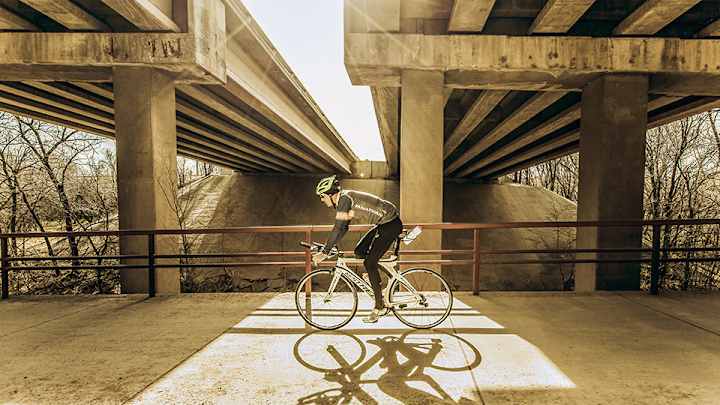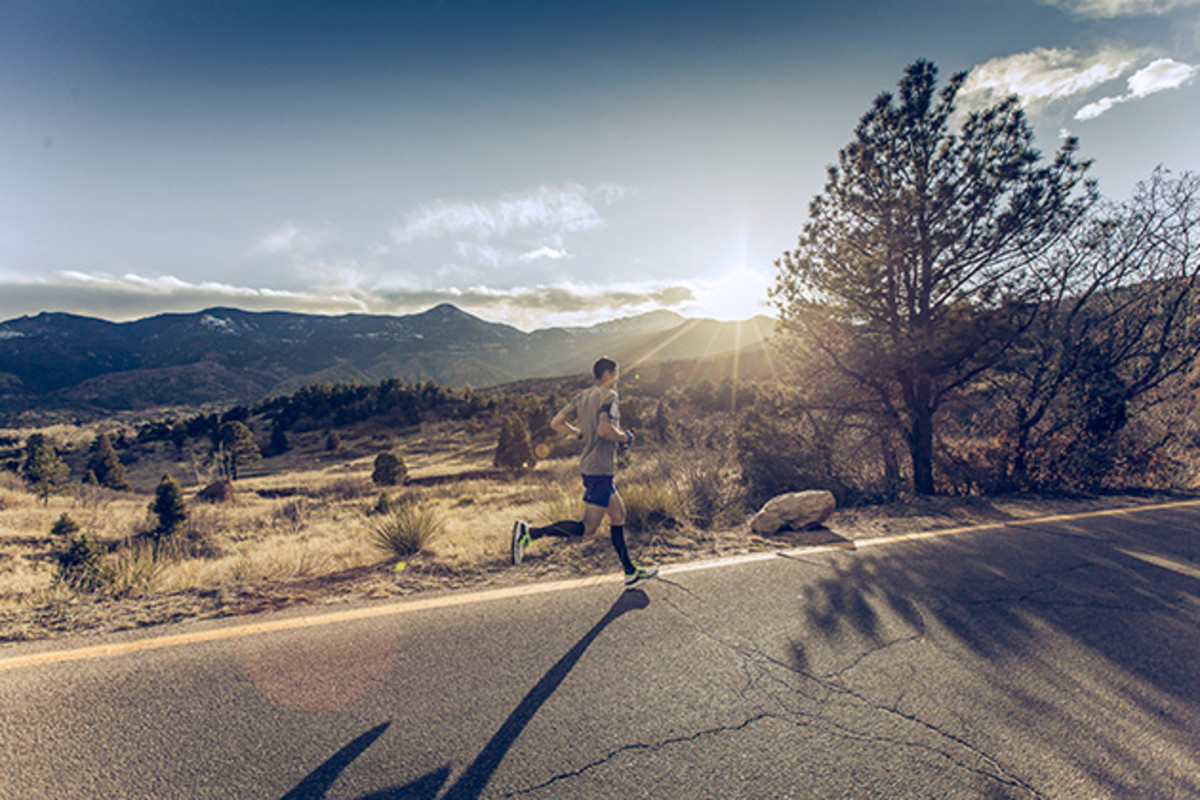Triathlete Andy Potts makes sure all the training he does works for him

The Andy Potts work week is a little different than the average folks’. On a recent weekday, Potts spent some time chatting with SI.com from his home in Colorado Springs before embarking on his day’s agenda: a three-hour-and-20-minute bike ride followed immediately by 90 minutes of interval work on a track with his coach. Potts would follow those two intense activities by going home and lifting weights for an hour, stretching for 15 minutes and then indulging in a three-minute shower—yes, he times out his showers—before eating lunch in the car on his way to swim practice. There, he had two hours lined up, with “movement required” for eight full hours of training. Of work.
Sure, it was a big day. But all of Potts’ days are big, as befits one of the leading triathletes in the country, no matter the distance.
“I don’t quite reach 40 hours of work a week, but I get pretty close,” Potts says. “We are getting after it. I don’t have a lot of fluff involved.” So that’s about 38 hours a week of intense training.
The former Olympian and 70.3 World Champion, 38, has only increased his workload over his career. And while the competition distances and styles change—the Olympic triathlon includes 24.8 miles of biking in a draft-legal setting, while the Ironman distance calls for 112 biking miles with no the drafting—so does the training, with Potts making changes “through trial and error.”
“I’ve looked at it as a challenge,” he says about the transitions and changes he has made, while working with the same coach throughout his career. “Each new endeavor, as I’ve gone up in distance, has been a challenge to figure out on the Rubik’s Cube of how to best prepare.”
Potts also takes a step back, looking at his career as an evolution, both personally and athletically, using his mistakes to apply new principles in his training. That perspective has helped him focus on the journey, instead of dreading the pain.
Lindsey Vonn's winter success is built on dedicated summer training
But even as Potts puts a focus on the Ironman-style length, he still mixes in races as short as two hours for the variety. The mixing of distances helps him “lift the whole game” and keeps him mentally sharp.
“Each distance presents a different hurdle,” he says. The Ironman, for example, offers a high mental hurdle, forcing athletes to persevere and stay focused for eight-plus hours. But for Potts, he enjoys the mental hurdle.
“For me, for some reason, the mental hurdle has been a small hurdle, I’ve been able to focus and stay driven and I guess I thank my parents for the skill and my coaches for cultivating and nurturing it,” he says.
For Potts, the physiology of riding a bike for more than four hours and then running a marathon proves the higher hurdle. Staying optimistic is how he deals with it all. “I’m a positive thinker, I’m a glass half-full kind of guy, an optimist at heart,” he says. “I’m able to break down seemingly unmanageable parts into manageable situations. I can get to the next cone, corner, tree or over the next hump.”
In an Ironman-length race, putting a focus on a single cone, instead of the hundreds he’ll ride past, allows Potts to stay mentally in tune. Part of that in-race optimism comes, though, through that week of intense training.
Potts does more than just build his strength and endurance; he also breaks down every technique during training. “You can overcome a lot of obstacles along the way if you, say, focus on your elbows [while swimming],” he says. “High elbows, fingertips down. This becomes a repeatable mantra that can take your mind off things. It can help you burrow into what is propelling you forward.”

Along with technique, the LifeProof athlete stretches and lifts, often adding in about three hours of lifting per week and spending 30 minutes a day on stretching. The in-discipline training breaks down in similar fashion to how a race gets run. With 56 percent of an Ironman race on a bike, 33 percent spent running and up to 11 percent swimming, “I try to make my week look close to it.”
He does take a few liberties, though, working about 60 percent of his time on a bike and another 20 percent each for running and swimming. He drops the running and ups the swim to lessen the “punch back” the pavement hits him with and enjoy the non-impact benefits of swimming.
“The pavement will beat back at you and I can work on my engine, my heart and lungs in the other two less-impact aspects,” he says. “On running, it is all quality. I don’t do junk miles.”
At Rebecca Rusch's signature RPI race, bikers gutted it out on the gravel
Through swimming, Potts says that by having his blood flow from his fingertips to toes with a high heart rate helps draw oxygen to all his muscles and allow the recuperative powers that blood brings to heal micro tears throughout his entire body.
While Potts deals with the mental and physical hurdles of his extreme work, another hurdle he’s always dealt with is nutrition. Off the course he packs in the calories, starting with the biggest meal of the day at breakfast and then working his way lighter throughout the day, mixing in lean proteins, a variety of greens and a healthy combination of carbohydrates that include pastas, bread, quinoa, couscous and farro.
“I’m pretty disciplined with my diet and have become more disciplined through the years because of the importance of your race weight,” he says. “The optimal weight to maintain power and strength, but at the same time be light and feel like I’m light on my feet and light on my bike.”
Finding his optimal nutritional balance has been a 13-year experiment and one that can change on a daily basis, he says. On a race day, for example, Potts does what some may consider the unthinkable, opting for “gut bomb” muffins because “they fit well in my tummy.” The experienced racer still gets nervous on race day, and he’s found that muffins work for him, sitting well. During the race, he eats old-school PowerBar performance bars and other PowerBar products in his hydration. All this on his quest to parlay his training into performance.
Everything about a typical Andy Potts training session or race has an increased intensity and duration. But through over a decade of trial and error, he has built it that way. He’s cut away the fluff. And it has paid off.
Tim Newcomb covers stadiums, sneakers and design for Sports Illustrated. Follow him on Twitter at @tdnewcomb.
